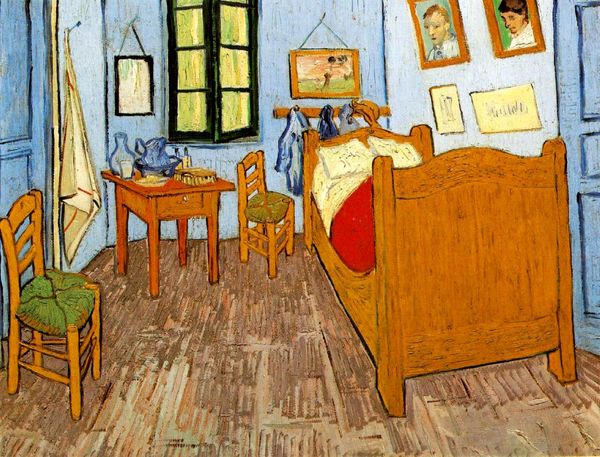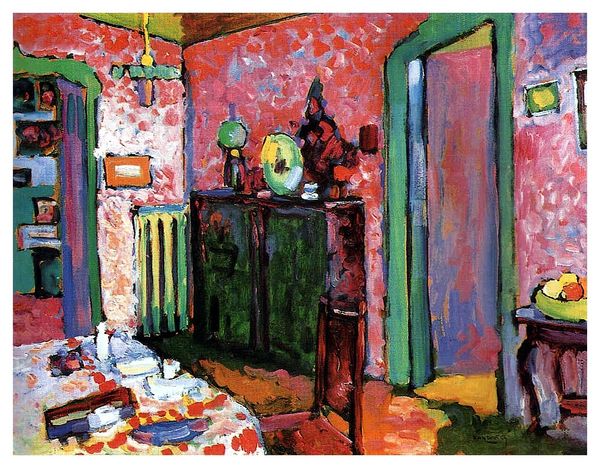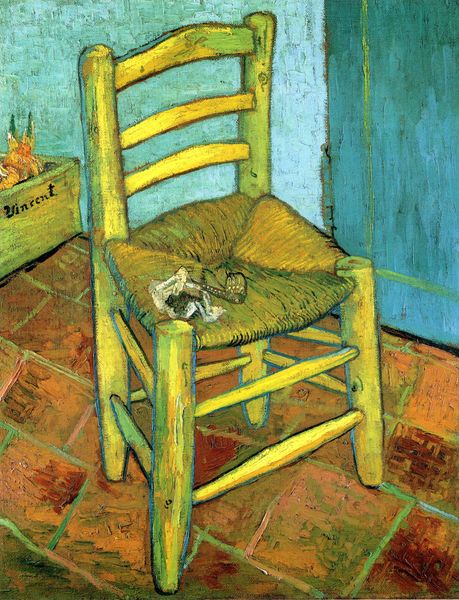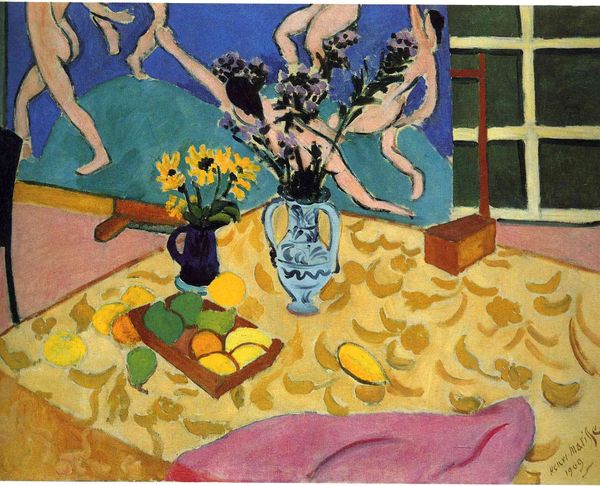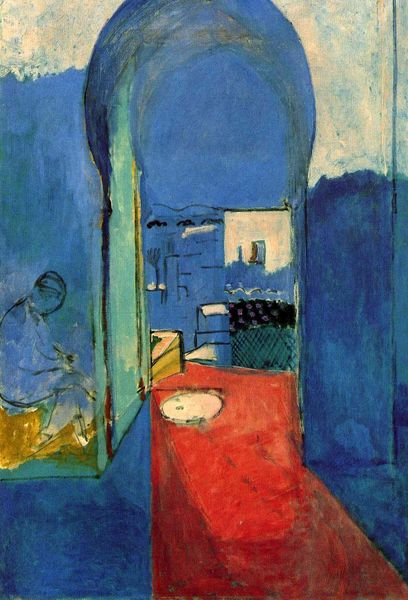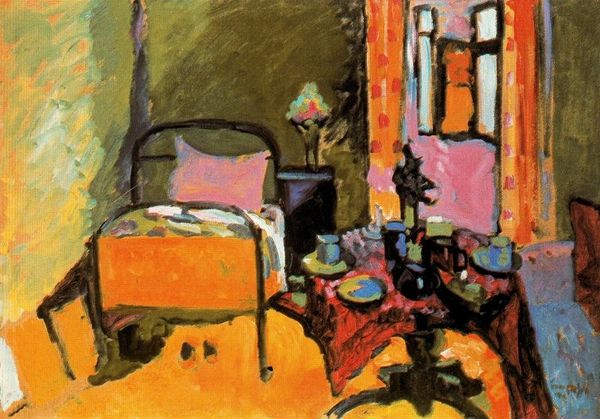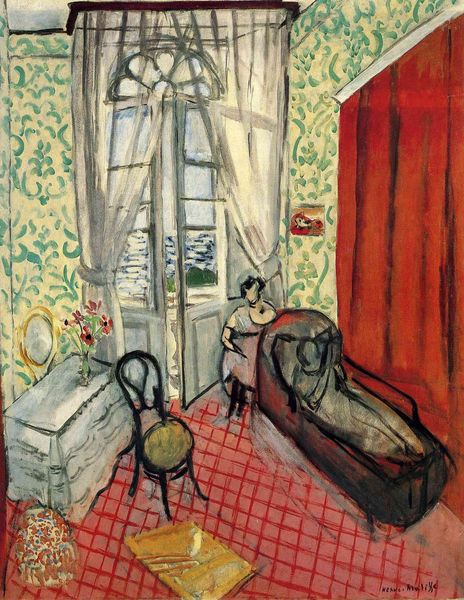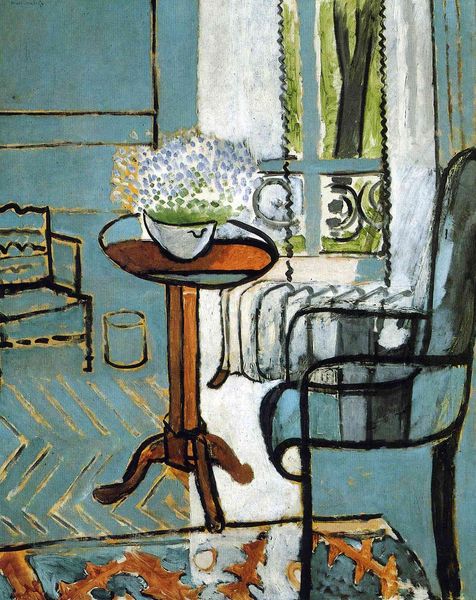
painting, plein-air, oil-paint, impasto
#
narrative-art
#
dutch-golden-age
#
painting
#
plein-air
#
oil-paint
#
impasto
#
genre-painting
#
post-impressionism
#
modernism
Copyright: Public domain
"Vincent’s Bedroom in Arles," by Vincent van Gogh, immerses us in a space where the mundane is rendered with extraordinary intensity through oil on canvas. The composition’s impact is immediate. The perspective, though ostensibly straightforward, feels subtly skewed, creating a sense of unease. The vibrant color palette is striking: the yellows of the furniture contrast sharply with the cool blues of the walls, evoking a sense of tension and emotional charge. Thick brushstrokes animate every surface, lending a tactile quality to the scene. Consider the formal qualities of the artwork. Van Gogh's use of color here is not merely descriptive but symbolic, resonating with broader philosophical concerns about subjectivity and the expression of inner states. The distortion of perspective destabilizes traditional notions of realism, inviting us to question the stability of perception itself. The paintings hanging crookedly on the wall serve as visual signs, hinting at a deeper disquiet. Ultimately, this painting's formal elements transcend mere aesthetics. They engage with fundamental questions about representation, perception, and the human condition. Van Gogh offers not just a depiction of a room, but a meditation on the nature of existence itself.
Comments
No comments
Be the first to comment and join the conversation on the ultimate creative platform.
